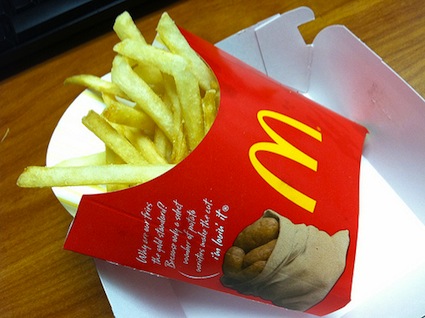
princessdlaf/iStock
Earlier this week, I wrote about some of the nutrition controversies surrounding the release of new United States Dietary Guidelines in 2015. The Guidelines, which inform public health initiatives, food labels, and what health-conscious parents decide to make for dinner, are revised every five years, with help from a scientific committee.
Today, that committee released its initial scientific report, an extensive 572-page tome on all the current thinking about healthy diets.
So what are we eating—and what should we be eating—in 2015?
- Perhaps the biggest change this year could breathe some life into your breakfast habits: The cholesterol in egg yolks is no longer as much of a health concern. The US Dietary Guidelines used to recommend that you eat no more than 300 milligrams of dietary cholesterol a day, or under two large eggs. But this year, the committee has scrapped that advice as new research suggests that the cholesterol you consume in our diets has little to do with your blood cholesterol. Saturated fats and trans fats, on the other hand, could boost your blood cholesterol levels, as could unlucky genes.
- The committee found that Americans lack vitamin D, calcium, potassium, and fiber in their diets. We also eat too few whole grains. On the other hand, we eat far too much sodium and saturated fat. Two-thirds of people over age 50, those most at risk for cardiovascular disease, still eat more than the upper limit, or 10 percent of their daily calories from saturated fat.
- Gardeners, rejoice: The committee applauds vegetables in its latest report, describing them as “excellent sources of many shortfall nutrients and nutrients of public health concern.” Unfortunately, our veggie intake has declined in recent years, especially for kids. Only 10 percent of toddlers eats the recommended 1 cup of vegetables a day.
- Added sugars, which make up 13.4 percent of our calorie intake every day, contribute to obesity, cavities, high blood pressure, and potentially cardiovascular disease. If you are in tip top shape, the committee suggests keeping your added sugar consumption under 10 percent of your daily energy intake, or roughly 12 teaspoons (including fruit juice concentrates and syrups). But for most people, the report adds, the ideal amount of added sugars is between 4.5 to 9.4 teaspoons a day, depending on your BMI.
- Most adults are fine to keep drinking alcohol in moderation—one cup a day for women, and up to two for men. “However,” writes the the committee, “it is not recommended that anyone begin drinking or drink more frequently on the basis of potential health benefits.”
- Be it máte, espresso, or chai, your caffeine habit is fine in moderation, up to 400 mg a day (3-5 cups of coffee). But before you start handing out the Rockstars: The committee found evidence that high levels of caffeine, such as those found in energy drinks, are harmful to kids and pregnant women. (Plus: See above for the danger of the added sugars found in many of these energy drinks).
- Seafood is a pretty healthy thing to eat from a dietary standpoint, and concerns about mercury don’t outweigh the health benefits of eating fish, according to the committee. And yet, the collapse of fisheries due to overfishing “has raised concern about the ability to produce a safe and affordable supply.” The report suggests that both farm-raised and wild caught seafood will be needed to feed us in the future.
- The committee found that a diet “higher in plant-based foods…and lower in calories and animal-based foods is more health promoting and is associated with less environmental impact than is the current US diet.” A group of 49 environmental and animal-welfare groups sent a letter to the US Departments of Agriculture and Health and Human Services to urge them to embrace this sustainability-oriented message in their Dietary Guidelines, which are set to be released later in 2015.













